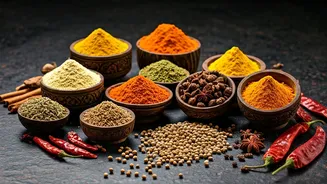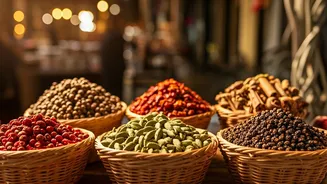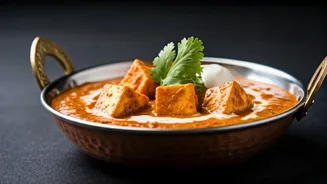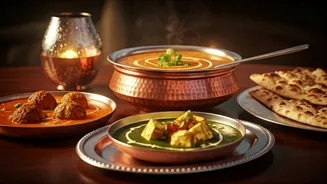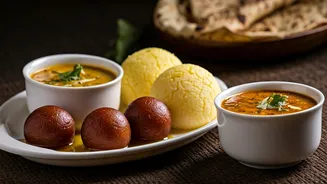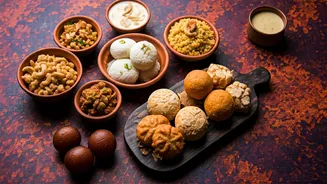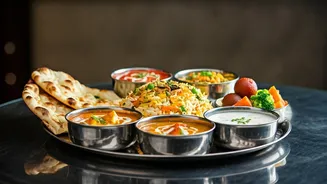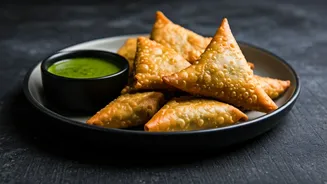A Land of Flavors
India's culinary landscape is a reflection of its diverse cultures, climates, and geographical features. Each region boasts its unique cooking style, ingredients,
and traditional dishes. The use of spices is fundamental to Indian cooking, and the combinations vary greatly, providing a wide array of tastes and aromas. From the fiery curries of the south to the rich, creamy dishes of the north, the food experiences are distinct. The influence of various historical events, including trade and migration, has also shaped the culinary landscape, adding to its richness and complexity. This flavorful journey through India reveals how food acts as a binding agent, uniting people across various backgrounds.
Cooking Methods Unveiled
Traditional Indian cooking involves a diverse range of methods that have been passed down through generations. The use of the tandoor, a cylindrical clay oven, is popular in North India for preparing various breads and marinated meats. Grilling and roasting over open flames is also a common technique. In the southern regions, steaming is widely used, particularly for dishes like idli and dosa. Frying is another key method, employed to create crispy snacks and flavorful curries. Slow cooking is also a beloved technique to deepen the flavors and tenderize ingredients. The use of clay pots and traditional utensils continues, infusing dishes with a unique, earthy taste. These traditional methods ensure the food maintains its rich texture and flavor, carrying the essence of Indian cooking.
Spices and Their Role
Spices are at the heart of Indian cuisine, contributing to the distinct flavors, aromas, and colors of the dishes. Each spice has its unique properties and plays a crucial role in creating the overall taste profile of a dish. Turmeric, for instance, adds a vibrant yellow hue and possesses anti-inflammatory benefits. Cumin, coriander, and cardamom provide warmth, earthiness, and a touch of sweetness, respectively. Chili peppers contribute the heat, which varies according to the variety used. Garam masala, a blend of several spices, is frequently used to add depth and complexity. The skillful combination of spices distinguishes Indian cooking. Indian chefs carefully balance and blend spices to create the perfect flavor profile, offering a sensory experience that tantalizes taste buds.
Iconic Dish Profiles
India is home to a vast array of iconic dishes that are celebrated both domestically and internationally. Butter chicken, a creamy tomato-based dish with tender chicken pieces, is a North Indian favorite. Biryani, a flavorful rice dish with meat or vegetables, is prepared in different styles across the country. Dosa, a thin crepe made from fermented batter, is a popular South Indian staple, typically served with sambar and chutney. Samosas, the crispy, deep-fried snacks, are loved across India. These dishes reflect the regional differences and the country's culinary diversity. Each dish tells a story of culinary heritage and cultural influence, offering a taste of India's rich history. Every bite of these dishes transports people to the very heart of India.
Food in Indian Culture
Food plays a central role in Indian culture, representing more than just sustenance; it represents togetherness, tradition, and celebration. Family meals are often elaborate affairs, bringing together generations to share food and connect. Festivals and religious occasions always involve special dishes and celebratory feasts, reflecting the cultural diversity and customs. Serving food with love and respect is a common practice, highlighting the importance of hospitality. The preparation of food can also be a sacred ritual. Every meal is an opportunity to express gratitude and strengthen relationships. Food serves as a unifying factor, connecting people through shared experiences. Indian culture highly values food and the communal experience it fosters.
Regional Variations Explored
Indian cuisine varies significantly across its regions, each with its unique food traditions, ingredients, and cooking methods. In North India, dishes like butter chicken, tandoori, and various rich curries are very common. The East emphasizes fish-based dishes and sweets, influenced by Bengali cuisine. South India is known for its reliance on rice, lentils, and the use of spices such as curry leaves and mustard seeds, including dishes like idli, dosa, and sambar. West India offers vegetarian dishes, seafood, and spicy curries. These regional variations mirror the cultural diversity, environmental factors, and historical influences. Exploring the regional aspects of Indian food is like embarking on a culinary journey through a mosaic of flavors, traditions, and ingredients.
Modern Trends and Influences
Indian cuisine has also adapted to modern trends, including the popularity of fusion dishes and the growing demand for healthy and sustainable cooking practices. Chefs are experimenting with traditional recipes and innovative ingredients, integrating global influences to create exciting new flavors. The farm-to-table movement has also gained traction, with a greater focus on locally sourced ingredients and organic farming. Vegetarian and vegan options are becoming increasingly popular, reflecting the rising health-consciousness and the emphasis on ethical eating. The use of technology in food preparation and delivery is also changing the dining experience. These trends demonstrate the dynamic and progressive nature of Indian cuisine, adapting to evolving consumer preferences while retaining its cultural heritage.
